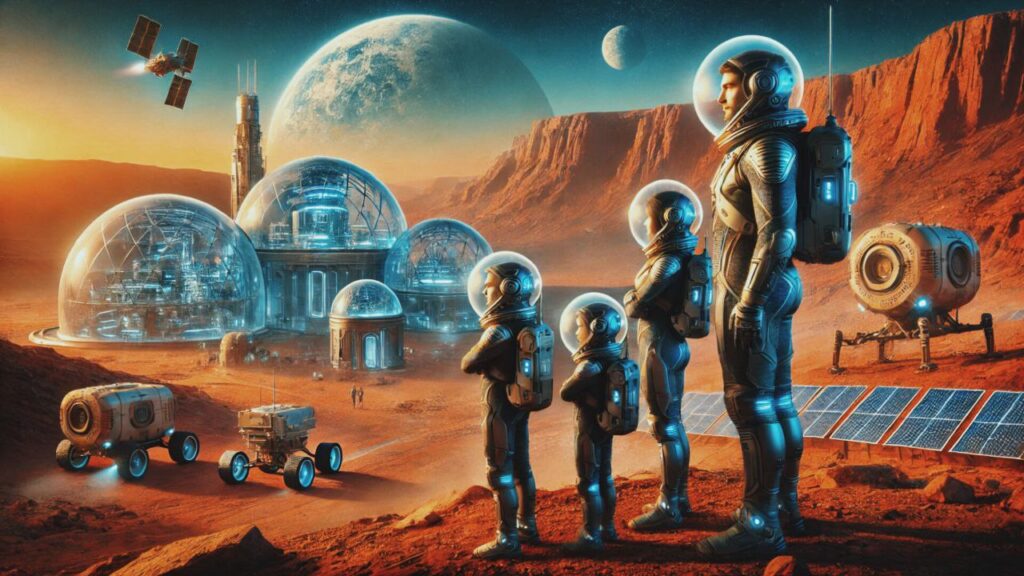How to Live on Mars: A Step-by-Step Guide to Surviving the Red Planet

Living on Mars, once a dream, is slowly becoming a reality with advancements in space exploration and technology. While we’re not quite ready for permanent human settlements yet, here’s what would be required to survive and thrive on the Red Planet.
1. Spacecraft Travel and Arrival
To reach Mars, astronauts would first need a spacecraft capable of carrying humans for a 6-9 month journey through space. NASA’s Artemis program and SpaceX’s Starship are both working on technologies to transport astronauts safely. Upon arrival, they’d enter Mars’ orbit and begin the descent to the surface.
2. Living in Habitats
Mars’ atmosphere is not breathable and offers no protection from radiation, so astronauts would need to live inside pressurized, shielded habitats. These habitats would be designed to provide oxygen, temperature control, and radiation protection. The interiors would include living quarters, labs, and greenhouses for food production.
3. Oxygen Supply
On Mars, the atmosphere is 95% carbon dioxide, which is toxic to humans. A life-support system will generate oxygen from Mars’ resources. The MOXIE (Mars Oxygen In-Situ Resource Utilization Experiment) on NASA’s Perseverance rover has already demonstrated that it’s possible to produce oxygen from Martian CO2, and future missions may rely on this technology.
4. Water and Food
Water is essential for survival, and Mars has ice beneath its surface. Future colonists could extract water from these ice reserves. To grow food, astronauts would need to use hydroponics or aeroponics, growing crops without soil in controlled environments. Greenhouses with artificial light and a carefully controlled atmosphere will be essential for food production.
5. Protection from Radiation

Red Planet lacks a magnetic field and thick atmosphere, which leaves its surface exposed to harmful cosmic radiation and solar particles. Radiation shielding is crucial. Habitats might be built underground or with thick walls of Martian soil, which can help block radiation. Spacesuits for outdoor exploration would also need advanced shielding.
6. Power Supply
Energy on Red Planet will likely come from solar power, as the planet is close enough to the Sun for solar panels to be effective. However, solar power is limited by Mars’ dust storms and distance from the Sun, so backup power sources like nuclear reactors might also be necessary for consistent energy supply.
7. Transportation
Mars’ surface is vast and rugged, requiring rovers and other vehicles for exploration. These vehicles would need to be powered by electricity or solar energy and designed to withstand the harsh conditions. Rovers, drones, and even future flying vehicles could enable astronauts to navigate across the Martian surface. Also read: Welcome to the Future: 10 Mind-Blowing Concepts That Will Shape Tomorrow’s Cities!
8. Psychological Well-being
Red Planet colonists will face isolation, limited social interaction, and long periods of confinement. Maintaining mental health will be critical. Artificial reality or virtual reality systems could be used for entertainment, socialization, and maintaining a sense of connection with Earth. Regular communication with loved ones and Earth-based teams will be vital for emotional well-being.
9. Terraforming Mars (Long-Term Goal)
In the far future, scientists dream of terraforming Mars—transforming its environment to support Earth-like conditions. This could involve warming the planet, thickening the atmosphere, and creating a breathable environment. However, this process would take centuries, if not millennia.
10. Creating a Sustainable Colony
Over time, human colonies on Red Planet would need to become self-sufficient. This means creating a closed-loop system where waste is recycled, food is produced locally, and resources are extracted from the planet. Technologies like 3D printing could help build everything from habitats to tools.
In Summary:
Living on Mars is a complex challenge but not an impossible one. With the right technologies and resources, humans could one day live and work on the Red Planet. While there are still many hurdles to overcome—such as long-term health risks, sustainability, and technological development—space agencies like NASA and private companies like SpaceX are making significant progress in making Mars colonization a reality. For now, we wait, but the future of human life on Mars is looking more promising than ever before.
More: USA Announces Groundbreaking Plan to Build the World’s First Floating City by 2035.

